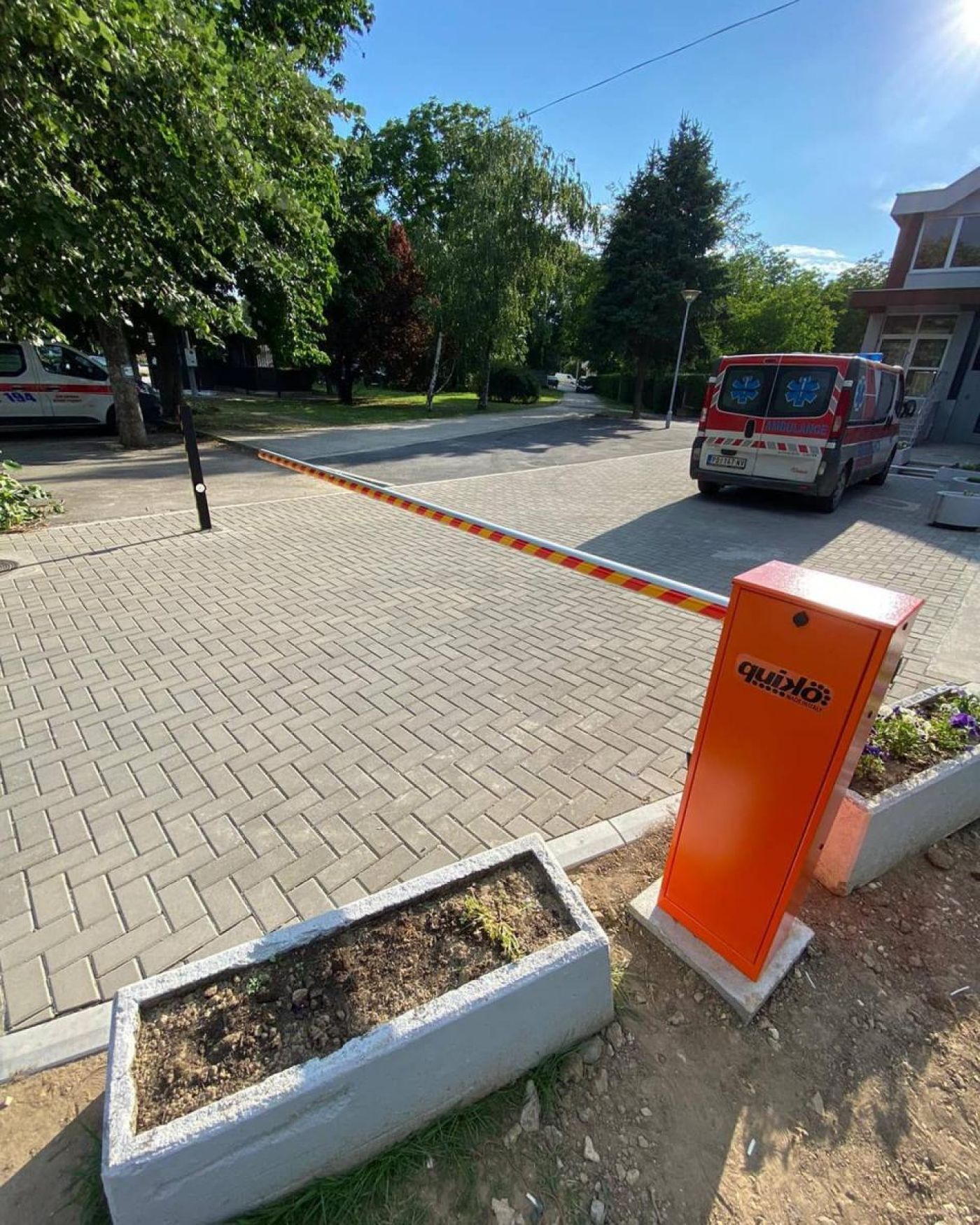Automatic road barriers working principle

Automatic road barriers are revolutionizing traffic management and security in both public and private spaces. These innovative systems offer a seamless blend of efficiency, safety, and convenience, making them an indispensable part of modern infrastructure.
From parking lots to toll booths, highways to industrial complexes, automatic road barriers are transforming the way we control vehicular and pedestrian movement.
Discover how these intelligent barriers can streamline your traffic flow, enhance security, and provide a cost-effective solution for your specific needs.
The simple yet effective mechanism of automatic road barriers
The automatic road barriers working principle is quite simple. The barrier opens for the traffic which is allowed to pass and stops the one that is not allowed.
The automatic barriers are made up of three parts – a rod, a mast, and a foundation. The rod is a few meters long and overlaps a portion of the road that is allocated to the right movement.
Working of automatic road barrier system
In the automatic road barrier system, the bar moves slowly towards the barrier, which is then automatically opened. The automatic barriers are equipped with gearmotors to increase the speed at which vehicles can pass through them. The gearmotors also allow the systems to speed up the vehicle passage in heavy traffic areas, as they detect vehicles that pass over the detectors. The barrier automatically lifts and closes to allow the vehicle to pass.
The automatic road barrier gates works in a similar way to the automatic barrier that opens when a train approaches. As the train approaches the moving site, the barrier raises and closes. This serves as advance notice of the move, and it can be activated by either the duty on moving or by a security guard. Once the vehicle has passed through the barrier, the automatic barrier will close. Quiko can advise you on the best solution for your application, from its series of
Types and benefits of automatic road barrier system
The automatic barriers can block vehicular and pedestrian traffic. They work by using a variety of technologies, including pushbuttons, remote controls, detectors, sensors, and many others. These gates are used, in industrial and commercial areas, including transportation terminals, home driveways, delivery docks, and police facilities. They can also be used to control the flow of goods or people. There are two different types of barrier systems in general: manual barriers and automated ones.
Depending on the application, the barrier may be electric or mechanical. Regardless of whether it is automatic or manual, both types of barriers are a great option for controlling traffic. The automatic barriers designed by QUIKO are also equipped with a backup battery system in case of blackouts and emergencies. We at Quiko guarantee highly efficient and effective services functionality as an automated barrier manufacturer. Automatic road barriers, for example, are a flexible piece of technology that is used to manage and limit traffic in streets, society, and other places.
The automatic road barriers are complemented by the automatic traffic lights on the moving path. The former complements the latter and prevents vehicles from passing through it. When a train approaches, the gate raises and lowers automatically.
The automatic road barriers work gearmotors for fast opening and closing of barriers. These barriers are also available with various features. Most of them are able to be mounted on the top of a parking lot, and they are a great choice for a temporary or permanent barrier.
The automatic road barriers have a dual purpose, they control traffic in private and public areas. They are especially useful in parking lots, toll booths, and highways. They are also highly sought after in modern infrastructure projects and use the latest technology to increase their efficiency. The most common use for these barriers is in toll booths. If a train is moving, the barrier will stop the train before it even comes in contact with the train.
In Conclusion
A rising bollard is an independent unit that integrates electric strokes, a microcomputer, and hydraulics. The system is designed to balance traffic by releasing the barrier based on the signals and information.
As a result, the bollards are designed to be lowered or raised automatically. The rising bollards can be programmed to stop the flow of traffic and open a passageway in the opposite direction.
Don’t let outdated traffic management systems hold you back. Upgrade to cutting-edge automatic road barriers and experience the difference for yourself.
Contact us today to explore tailored solutions that will revolutionize your traffic control and security measures. Our team of experts is ready to guide you through the selection process and ensure you get the perfect automatic road barrier system for your unique requirements.
Take the first step towards efficient, secure, and smart traffic management – reach out now!